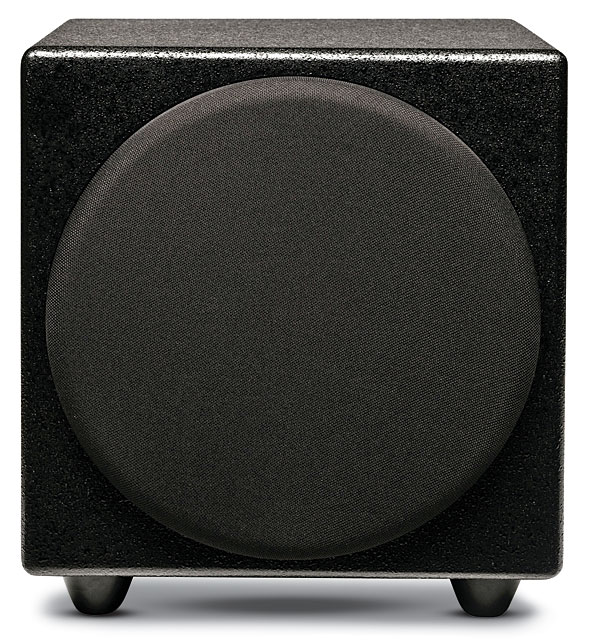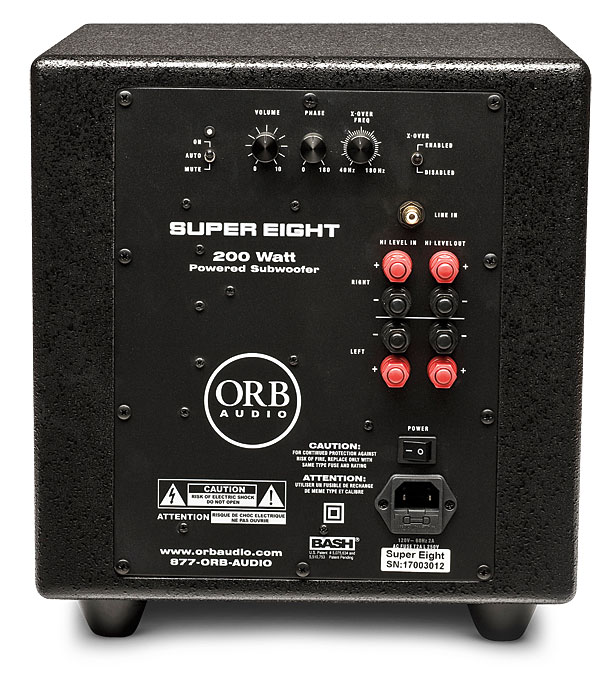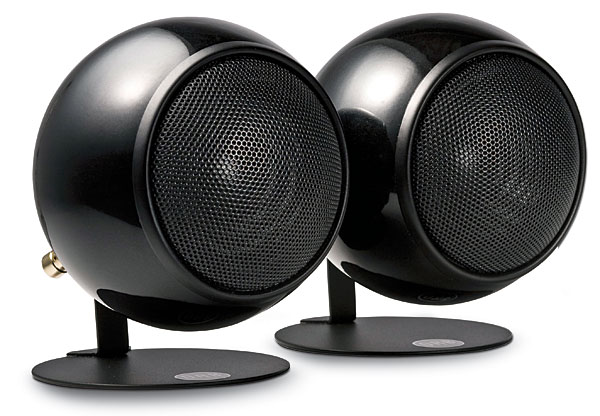Both the Nucleus and the A'Diva (either in regular or Ti) use a single full-range driver, either conventional plastic or made from titanium.
Orb Audio People’s Choice Speaker System Page 2

Rainfall, fire, blasting muskets, the roar of crowds: These were just some of the challenges Anonymous threw at the Orbs, showing off their resolution, versatility, and surround continuity. I don’t think much of the film’s premise that Shakespeare was an imposter who didn’t author the plays and poetry attributed to him. But wow, what a busy soundfield, what epic sweep! The system was at its best with rowdy theatrical crowds in the wraparound milieu of the Globe Theatre, making me feel the space and passions unleashed within.
Pristine and Refined
Yundi Li’s CD of Chopin’s Scherzi/Impromptus matched its pristine and refined pianism with a pristine and refined recording. This album, auditioned both early and late in the review process, laid bare the problem with the sub crossover. At 100 to 120 Hz, the left keys—and even the middle ones to some extent—lacked the necessary weight. But at 150 Hz, the physical balance of the pianist was restored. Once I was satisfied with the bass, I was free to enjoy the pianist’s glittering glissandos and subtle rhythmic sense.

The late Scott Appel advocated for Nick Drake’s songwriting long before it became fashionable. In Parhelion, he delivered beautiful covers of “Hazey Jane,” “Road,” and “From the Morning,” as well as original songs also worth hearing. I liked the way the Orbs, with their exemplary clarity, allowed me to hear the voice sometimes submerged beneath low-rent studio echo. Appel was also an astute student of Drake’s guitar technique, and the Orbs conveyed all the right harmonics, intonation, and touch.
A Scarcity of Miracles by Jakko Jakszyk, Robert Fripp, and Mel Collins has been in heavy rotation around here since its release. The Panasonic disc player couldn’t handle its lossless DVD-Audio soundtrack, so I turned my attention to the lossy DTS 5.1 version. When A/B’ed in the same system, they’ve sounded so close that most listeners would be hard-pressed to tell the difference. The Orbs offered fully developed guitar-synth, saxophone, and vocal textures without becoming unduly toppy. Tony Levin’s potently melodic Chapman Stick and bass-guitar playing were well served by the sub—it delivered pitch and a sense of his touch better than its $399 price would indicate, even without the use of equalization. Timbre matching between the dual Orbs in front and single Orbs in back gave the carefully constructed 5.1-channel mix the evenness it demanded.

Conclusion
With the People’s Choice package, Orb Audio stakes a claim to high-end performance in the sat/sub category. While it’s subject to the limits of compact sat/sub sets in general—mainly midbass integration—it also has tremendous appeal thanks to its high resolution, breezy sonic personality, gorgeously minimalist look, and literally tough-as-steel build quality. It is an A-list sat/sub set.
- Log in or register to post comments


With my Onkyo receiver Audyssey set the crossover frequency at 150 and I had the subwoofer's crossover disabled because of that. Your review suggests to me that I am slightly confused over this issue.
thelrdintexas
For the last two years I have used the Orbs with 4 mods for center channel, 2 mods eacg for left and right front, 2 mods each for rear and 1 mod each for front high, right and left.
I have been very pleased with their sound.
























































